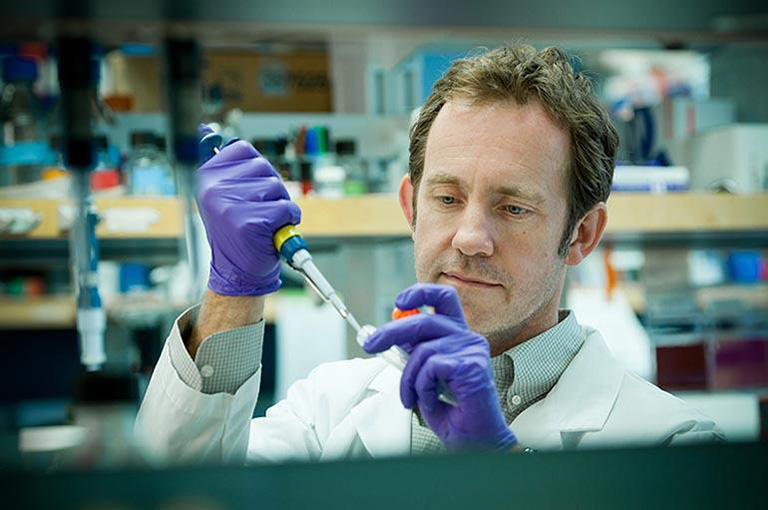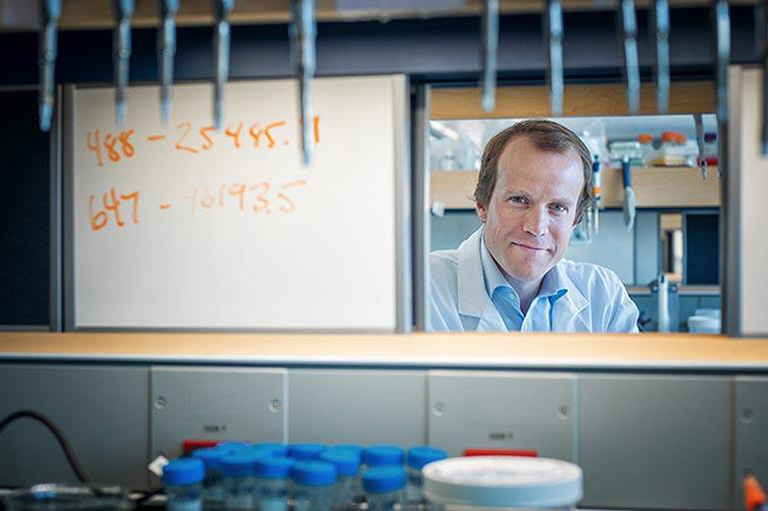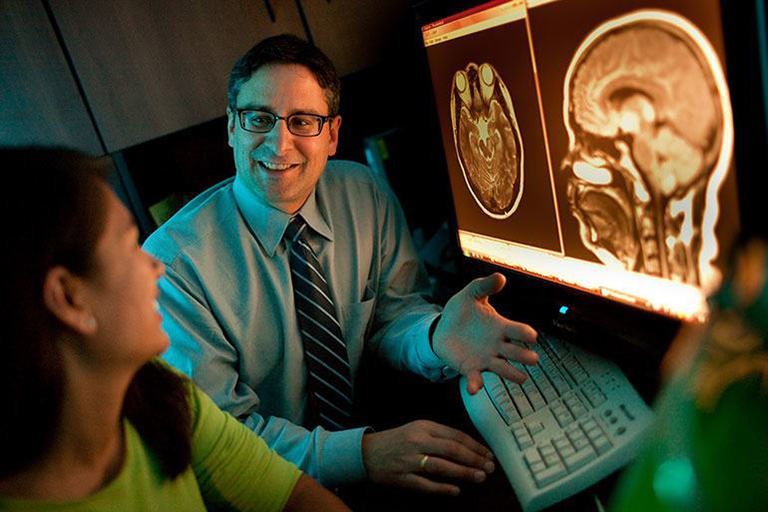Precious Matter
Reach up, put your hands on both sides of your head.
Size wise, the average adult brain is underwhelming: about 1.4 kilos and around 1,300 cubic centimeters. But brains are far more complex and mysterious than their delicate structure; they are the key to our identity and sense of self.
Which makes it all the more frightening when disease or disability strikes this vehicle, anchor and soul of our personal awareness and very existence. Stroke, cancer, neurotrauma, the terrible wasting diseases of amyotrophic lateral sclerosis (ALS), Parkinson’s Disease, Alzheimer’s Disease (AD), dementia — in all cases, the driving question facing researchers is what makes for a healthy brain and what, in turn, makes it vulnerable to disease?
Abetted by environmental toxins, unhealthy lifestyles, the double-edged sword of ever-increasing longevity and other factors known and unknown, brain diseases and disabilities are ramping up. It’s estimated that by 2020 brain disease will overtake heart disease and cancer as the leading cause of death and disability in Canada.
At UBC and on both campuses, generations of scientists, researchers and faculty have fought to understand and fend off these diseases. Aided in large part by the generosity of donors large and small, progress has been made, from the personal preventative to the world-shaking breakthrough.
In one of its first major and now ongoing collaborations, UBC’s new Survive and Thrive Applied Research (STAR) facility is developing a sports and hockey helmet that could reduce brain injuries and concussion. Designed around Imperial College London’s light, flexible, impact-absorbing Armourgel and with the assistance of Kelowna-based Helios Global Technologies, STAR is working on a prototype helmet liner that might one day become standard kit for contact sports.
On the larger scale, working out of the new 13,700-square-meter Djavad Mowafaghian Centre for Brain Health at UBC Vancouver, specialists such as Laura Boyd (stroke), Matt Farrer (Parkinson’s), Tony Traboulsee (MLS), Alex Rauscher (MRI research), Neil Cashman (ALS) and Haakon Nygaard (AD) are pushing back, hard, on all fronts.
Any brain disease or disability is horrible but Alzheimer’s and dementia are especially vicious. Long before the body dies, the mind is destroyed; it’s a double-death sentence. As Canada’s population ages, the economic and personal devastation grows. If no cure is found, by 2031 an estimated 1.4 million Canadians will be afflicted, with roughly 40 percent of all people above age 80 (and their families) suffering from the disease and its effects.
At the Djavad Mowafaghian Centre for Brain Health, Nygaard is seeking ways to slow — if not stop — AD on the molecular level, whether via new drugs or by ‘re-purposing’ existing medications such as the cancer drug Saracatinib and gauging their effects. If such drugs or combinations can be identified, Nygaard says it can “shave off many years of development and tens of millions of dollars.”
That and rescue thousands of minds that would otherwise be lost to the disease.
Leading edge research isn’t cheap but if you’ve got a brain, you have a vested interest in keeping it healthy. “Let your voice be heard” encourages Nygaard. “Get involved in raising money and becoming part of the solution. Only together will we succeed in bringing an end to this terrible disease.”
Thankfully, donors and low-key philanthropists such as Djavad Mowafaghian and Charles Fipke, UBC alumnus, legendary geologist and ‘father’ of Canada’s northern diamond industry, are more than doing their bit.
In fiscal 2014/15 Fipke pledged $3 million to endow the research professorship now held by Nygaard, $600,000 to help outfit the Djavad Mowafaghian Centre for Brain Health’s dedicated lab and $5.5 million for new brain-imaging technology. This follows $8.7 million already donated by Fipke, mostly for infrastructure and equipment for UBC Okanagan.
“I am tremendously honoured to be the inaugural Fipke Professor in Alzheimer’s Research,” says Nygaard. “Just as Mr. Fipke persevered in his quest to find diamonds in North America, we will work tirelessly towards an effective therapy for people living with Alzheimer’s disease and other dementias.”
Read more about
Research ExcellenceRead more Research Excellence stories:
- Taking the spike out of diabetes
- The Pharma Is In
- Olympic Sized Reductions
- Solar Cells? Naturally
- Sustainable Stand, No Longer a Tall Order
- Fold, Spindle, Mutate
- Bita Imam, Student Extraordinaire
- Drilling for Medical Success
- Top Researchers Recognized: UBC’s Young Researchers Shine
- Oceans of Opportunity
- Charles Fipke: A Gem of a Friend and Philanthropist
- A Royal Welcome
- Julio Montaner: Shifting the Global Conversation on HIV/AIDS
- David Cheriton: Making Everything Compute
- Doubling Down on Gambling Research
- Julio Montaner, Olav Slaymaker, Honoured
- Jaymie Matthews Rocks On In Space
- Solar Cells? Naturally
- A Calculated Drama
- An Extrudingly Good Idea
Related Content
Size wise, the average adult brain is underwhelming: about 1.4 kilos and around 1,300 cubic centimeters.
Campus
OkanaganCampus
Vancouver

